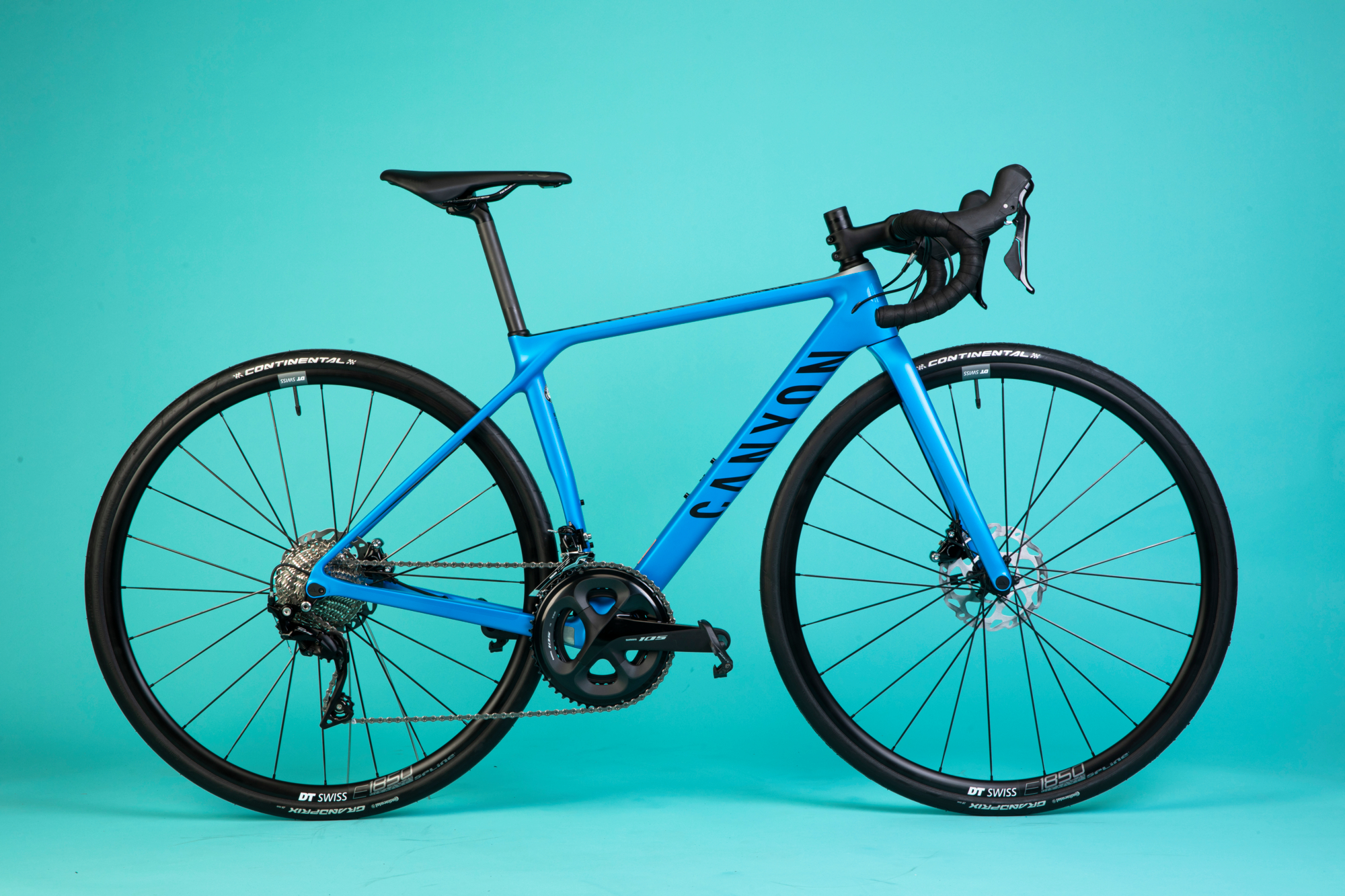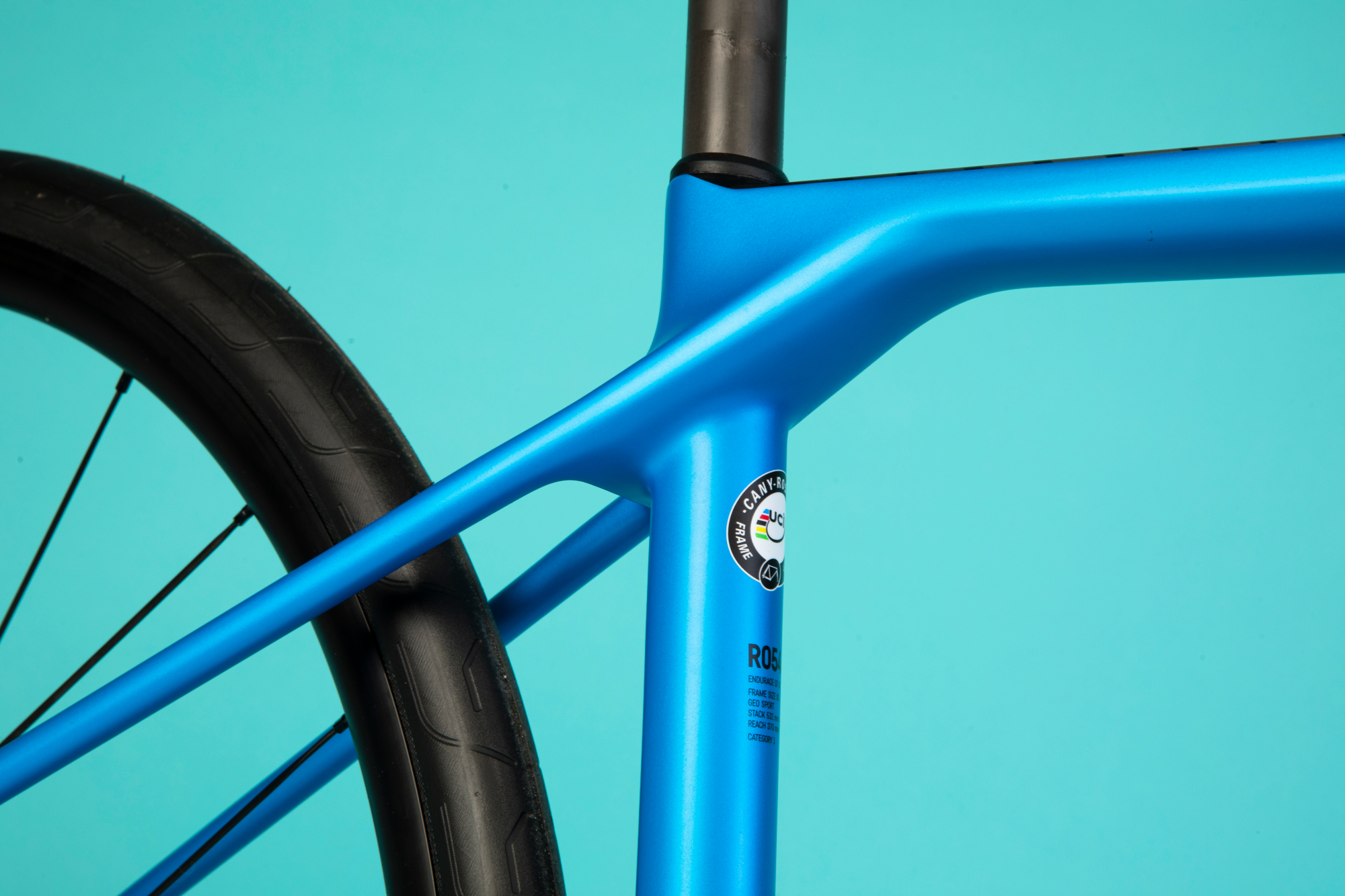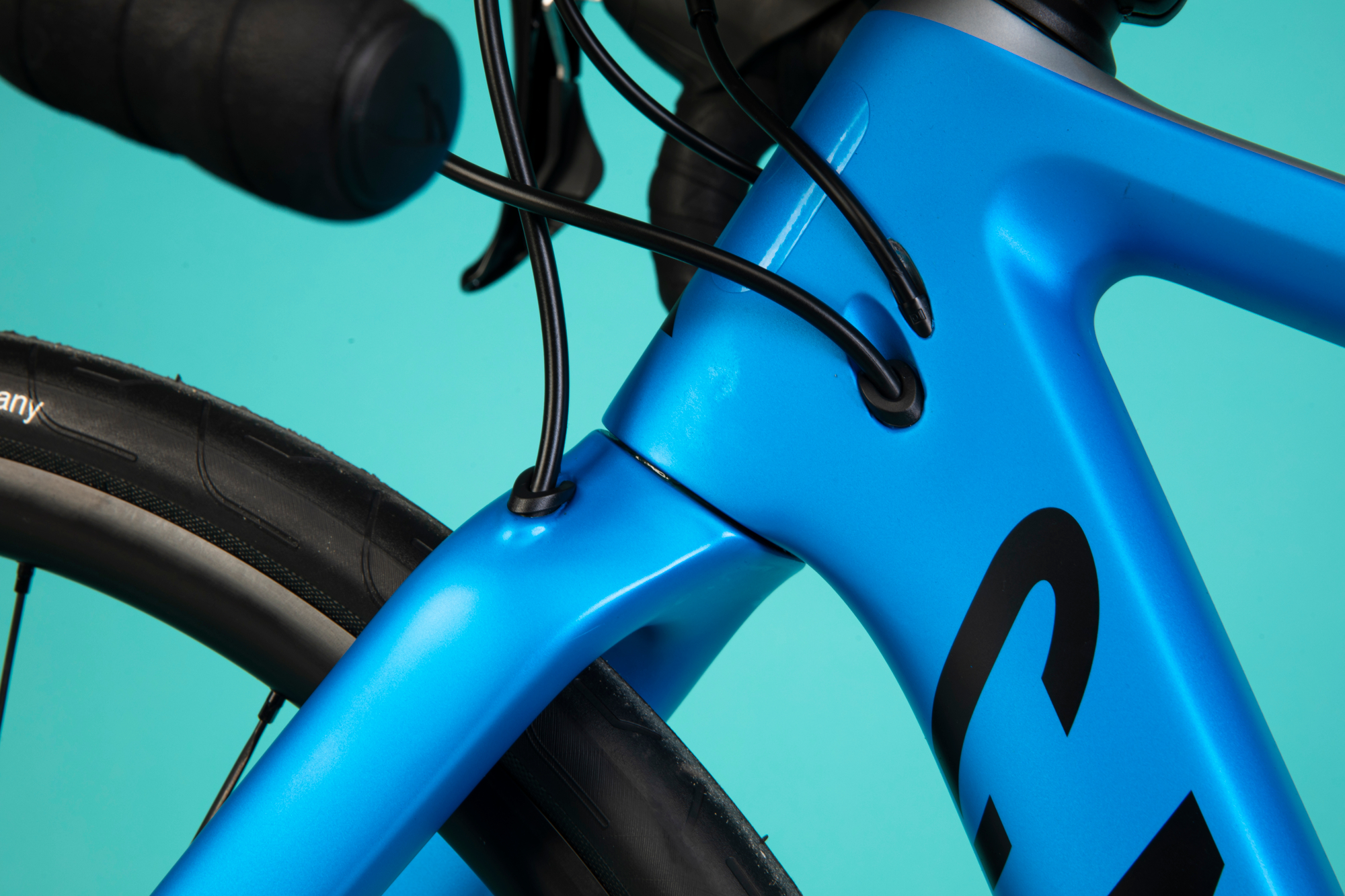Canyon Endurace CF SL Disc 7.0 review
A nimble ride doesn't have to mean sacrificing comfort, and Canyon's Endurace demonstrates this perfectly

A heady blend of comfort and performance offering excellent specification for the financial outlay The Endurace has been unchanged for a little while now, and could do with a chassis update - but the value for money on offer is compelling.
-
+
Great blend of speed and compliance
-
+
Value for money
-
-
Unchanged for a few years
You can trust Cycling Weekly.

When Canyon dropped the 'n' from endurance, it was for good reason. The Endurace is a longstanding and popular model which, though designed to accommodate all-day rides, offers up a surprisingly nimble chassis - something that often gets lost in translation within a somewhat saturated category.
>>> See it here: Canyon Endurace Disc 7.0 at Canyon for £1,849
At the rear end, thin seatstays and Canyon's VCLS seatpost aim to soak up the bumps. VCLS stands for 'vertical compliance, lateral stiffness' and coupled with the low clamping position, the idea is that the rider receives flex without impacting power transfer.

Up front, you've got Canyon's H17 Ergobar - a short reach aluminium option, whilst on the ground 28mm Continental Grand Prix SL tyres aim to remove yet more shock and help stabilise the rider in the corners by offering a wider contact patch than the (currently) traditional 25mm.
The Endurace employs "Open Sport" geometry. The XS model I had on test came with a stack and reach of 532mm/370mm - that's 1cm taller and 8mm shorter in reach than the race ready Ultimate. Bearing in mind that there's plenty of room for adjusting stem length and bar height via the spacers, it's really quite easy to manipulate this machine to fit an agressive position should you wish to, or you can stick with the highest position and standard stem (80mm in this case) for a more relaxed ride.
With a wheelsbase of 982, vs 980mm in the Ultimate, and both bikes featuring a 71° head angle, you're still going to get a flighty, agile ride from the Endurace, too - it's certainly no slouch of a bike.
Whilst we're on the topic of geometry, Canyon does offer the Endurace in a women's version - this has a reduced reach and taller stack (538/362mm), as well as slacker head angle (70.5°) and longer wheelbase (986mm) compared to a unisex/men's version the same size.

Anyway, it was the unisex model that I had on test, and it put a smile on my face from the first pedal stroke. Powering the Endurace on my standard testing loop - Surrey's Crowhurst circuit - my initial impression was that of a quick footed companion.
Hitting the teeth chattering section which I tend to use to assess compliance, I'd place the Endurace somewhere between an all-out sportive bike and a race machine: it didn't blur out all of the bumps, but did soften the blows.
At 8.3kg, the Endurace is far from a heft - but it is heavier than many of the speedy (far more expensive) pro level race bikes I've taken up the Surrey hills. Weight isn't everything, though - the springy ride quality meant but I barely noticed any penalty when scooting over to Kent's Toys Hill.
Another key test for the Endurace was a 120km winter outing with my cycling club. Where some endurance focused bikes have made me feel a little slow (especially compared to some of the well rested legs joining the ride), the Endurace had me contesting the final few at the top of climbs, and leaning into the corners on the way back down.
I did find that my lower back ached towards the end of a long ride, and I'd put this down to the shorter saddle to bar reach on offer creating a slightly different position. However, the stock stem being 80mm in length leaves plenty of space for adjustment. With the front end slammed, it was actually 10mm lower than my primary race bike too, which may have been a factor and suggests I didn't really need to go all the way with the spacers.
This iteration of the Endurace Disc 7.0 comes with the newest version of Shimano 105. The brake rotor are the larger 160mm diameter and the frame uses thru axles to secure DT Swiss aluminium hoops. These offered up a great ride, and unlike many sub £2,000 bikes, I'd not suggest a consumer need go out and replace the wheels off the bat.
In terms of gearing, you've got a 52/36 semi compact chainset, with a whopping 11/34 cassette. I didn't check the rear block before riding, but I now understand why I was spinning so happily up the hills, yet sometimes struggling to find just the right cog on the flat. A wide ranging cassette gives you loads of options on mountainous rides, but personally I'd probably swap down to an 11/28 at least if I was to make this bike my own, just to create a smoother gear change throughout the block.

So far, aside from some minor spec suggestions, so good - but perfection is pretty rare. A downside for the Endurace is that it's not had a major update for some years - the CF SLX was tweaked when the disc models was introduced in 2016 with the CF SL having a slight makeover in 2017. As nimble and well balanced as it is, the chassis is going to need a refresh soon or it risks falling behind.
Some of the most renowned endurance models on the market - such as the Trek Domane and Specialized Roubaix - have received a wave of the magic aero paintbrush, with the likes of wind slicing profiles and dropped seatstays broadening their repertoire and appeal.
However - and it is a big however - the Endurace, with a carbon frame, disc brakes and Shimano 105 groupset comes in at £1,849. Other market leading models with a similar spec will set you back closer to the £2,000 mark, or quite significantly more if you're getting aero credentials to boot. Since the rider accounts for 80% of drag, you could always invest that saving into a skinsuit or slippery helmet, too.
If you're after more performance, Canyon offers the CF SLX model, which is even lighter and comes with an optimised cockpit. Or, there's the AL models that utilise aluminum to cut the price.
It's also worth being aware that the Endurace really is an endurance/race blend, as the name suggests. For me, this was a real plus and I enjoyed the ride no end. However, if you're seeking the plushest of comfort rides, it might not be the one.

Thank you for reading 20 articles this month* Join now for unlimited access
Enjoy your first month for just £1 / $1 / €1
*Read 5 free articles per month without a subscription

Join now for unlimited access
Try first month for just £1 / $1 / €1
Get The Leadout Newsletter
The latest race content, interviews, features, reviews and expert buying guides, direct to your inbox!
Michelle Arthurs-Brennan the Editor of Cycling Weekly website. An NCTJ qualified traditional journalist by trade, Michelle began her career working for local newspapers. She's worked within the cycling industry since 2012, and joined the Cycling Weekly team in 2017, having previously been Editor at Total Women's Cycling. Prior to welcoming her first daughter in 2022, Michelle raced on the road, track, and in time trials, and still rides as much as she can - albeit a fair proportion indoors, for now.
Michelle is on maternity leave from April 2025 until spring 2026.
-
 'I'll take a top 10, that's alright in the end' - Fred Wright finishes best of British at Paris-Roubaix
'I'll take a top 10, that's alright in the end' - Fred Wright finishes best of British at Paris-RoubaixBahrain-Victorious rider came back from a mechanical on the Arenberg to place ninth
By Adam Becket Published
-
 'This is the furthest ride I've actually ever done' - Matthew Brennan lights up Paris-Roubaix at 19 years old
'This is the furthest ride I've actually ever done' - Matthew Brennan lights up Paris-Roubaix at 19 years oldThe day's youngest rider reflects on 'killer' Monument debut
By Tom Davidson Published
-
 'One of the hardest races I've ever done in my life' - Tadej Pogačar finishes runner-up on Paris-Roubaix debut after crash
'One of the hardest races I've ever done in my life' - Tadej Pogačar finishes runner-up on Paris-Roubaix debut after crashWorld champion reacts to 'extremely hard' battle with Mathieu van der Poel
By Tom Davidson Published